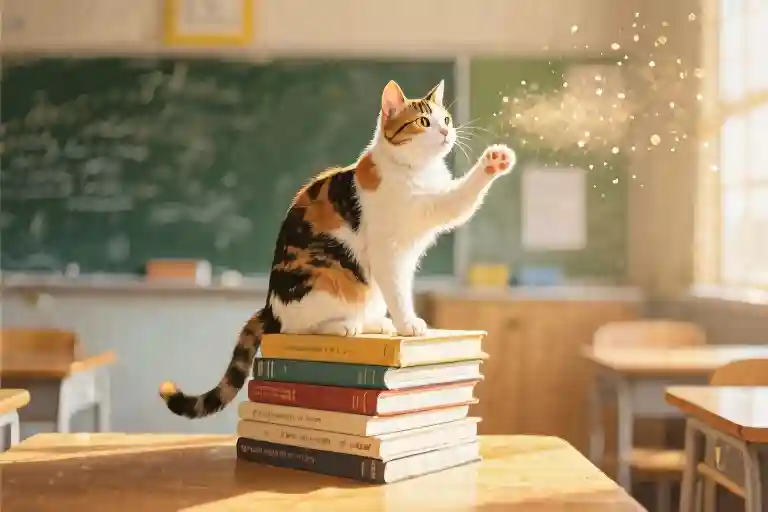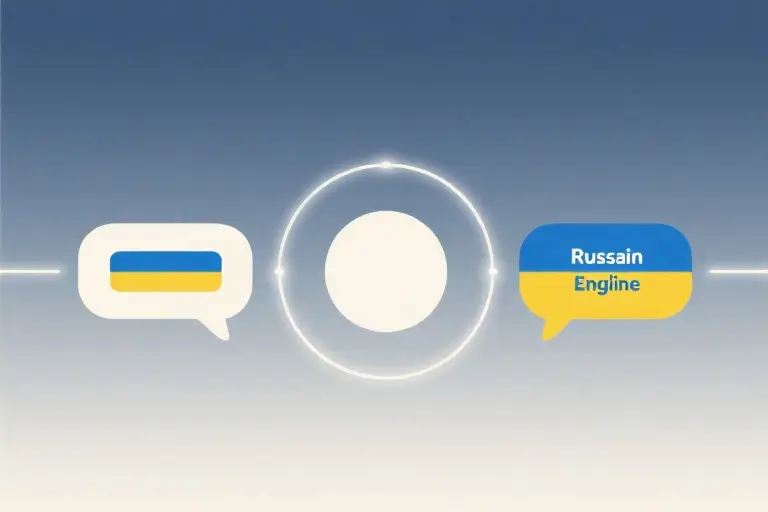The wooden ruler cracks against my desk with a sound like a gunshot, jolting me upright so violently my chair legs screech against the linoleum. Laughter ripples through the classroom as I grab wildly at the desktop, my cheeks burning. Sister Catherine’s sigh carries over the noise, that particular exhale reserved for students who float through lessons like dandelion fluff. Her fingernail taps the textbook page with deliberate precision.
‘Since you’re so determined to study the clouds today,’ she says, the corners of her mouth twitching between amusement and exasperation, ‘educate us about them properly. Start at “Atmosphere, Weather, and Climate.”‘
I recite the words mechanically while my mind replays the familiar script. Before the week ends, this scene will crystallize into three neat lines on my report card, that same haiku they’ve been writing since third grade:
Has great potential
Needs to apply herself more
Easily distracted
The ink bleeds through every parent-teacher conference, staining conversations about “untapped potential” and “wasted gifts.” I’ve learned to hold the phrases under my tongue like bitter medicine, waiting for them to dissolve into something easier to swallow. Some days I wonder if they realize how those words take root, growing thorns that catch on every attempt to reach what everyone insists I could become.
My heart pounds like a bird dog on point, rigid with certainty about the brilliant ideas just beyond the treeline. But my attention? That’s a feral tabby arching its back at the leash, claws shredding well-intentioned plans into confetti. By afternoon, I’m left panting amidst the wreckage of half-finished tasks, skin stinging with the phantom scratches of another failed attempt to corral my thoughts. The report cards aren’t wrong—just incomplete. They never mention the electric buzz of a mind that notices everything: the way dust motes dance in sunlight, the hidden rhythm in Sister Catherine’s pacing, the secret Morse code of radiator pipes.
Potential isn’t the problem. It’s the mismatch between how we measure focus and how some minds actually work—like judging a fish by its ability to climb trees, then wondering why it keeps flopping back into the water.
The Haiku in the Margins
The report card arrives with the same three-line verdict, typed neatly above the teacher’s loopy signature:
Has great potential
Needs to apply herself more
Easily distracted
It reads like a zen koan designed to break me. That first line—has great potential—isn’t the compliment adults think it is. It’s an IOU slip for a future version of myself, one that never seems to materialize no matter how many hours I spend staring at textbooks until the letters swim. Potential isn’t currency; you can’t buy lunch with it or trade it for a passing grade when your mind keeps wandering out the window to track cloud formations.
And that second line—needs to apply herself more—carries the sour tang of misdiagnosis. What they call lack of effort is actually the opposite: I’m applying too much, straining to focus until my temples ache, only to realize I’ve memorized the grain pattern of my desk while the lesson evaporated around me. The harder I grip the reins, the more my thoughts buck and scatter like spooked horses.
Then comes the kicker—easily distracted—as if my brain’s tendency to follow interesting thoughts down rabbit holes is some moral failing. Studies show creative thinkers have 30% more “distractible” neural pathways, yet standardized assessments penalize this trait relentlessly. We mistake a different operating system for a malfunctioning one.
These three lines form a cultural haiku we’ve all internalized:
Be better than you are
But also be someone else
Why can’t you just—
The blank space after the dash holds everything unsaid: Why can’t you sit still, absorb information linearly, care about quadratic equations when there’s a spider weaving calculus in the corner? The system rewards certain types of minds while pathologizing others, leaving many “high potential” students feeling like failed prototypes.
Here’s what they never write in the margins: Maybe the problem isn’t your attention span struggles, but classrooms that feel like trying to drink from a firehose. Perhaps your untapped potential isn’t hidden in forced concentration, but in learning to channel that feline awareness toward what truly matters. After all, cats don’t fail at being dogs—we just keep judging them by the wrong standards.
The Cognitive Zoo Inside Your Head
The ruler’s sharp crack against my desk wasn’t just wood hitting wood—it was the sound of two animals colliding inside me. One part of me, the bird dog, immediately snapped to attention, quivering with intensity toward the textbook passage Sister Catherine demanded I read. The other part, that hissing feline attention span, arched its back and bolted under the mental bed.
We all house these creatures in our minds. Maybe your focus isn’t a spooked cat but a goldfish circling endlessly, or a squirrel storing acorns of half-formed ideas. The animal metaphors we use for our attention spans aren’t just poetic whimsy—they’re neurological truth wrapped in fur and feathers.
Your Personal Attention Menagerie
Take this quick inventory:
- Does your focus point like my bird dog toward interesting scents, then forget the original trail? (Welcome to the ADHD retriever club)
- Does it perch like an owl for hours, then vanish when needed? (Night-owl focus patterns)
- Does it graze like a cow, chewing cud of the same worry? (Anxiety-driven looping)
These aren’t flaws—they’re evolutionary adaptations misfiring in fluorescent-lit classrooms. That “cat” of mine? It’s the same hypervigilance that kept ancestors alive by noticing every rustling leaf. The “bird dog” is our dopamine-driven reward system pointing toward what truly matters to us, not necessarily what’s on the curriculum.
Training Without a Leash
Traditional focus advice fails because it assumes we’re training Labrador retrievers when we’ve actually got:
- The cat (notorious for ignoring commands)
- The bird dog (overly specific in its interests)
- The raccoon (will hyperfocus but only on shiny trash)
The breakthrough comes when we stop forcing the cat to heel and start creating conditions where it chooses to cooperate:
- Bird dog hours: Let it point fiercely—schedule intense work during natural alert periods
- Cat playgrounds: Designate distraction spaces (notes app, sketchpad) so the mind doesn’t create its own
- Raccoon enrichment: Satisfy curiosity cravings with scheduled deep-dives into random interests
Your report card might still say “easily distracted,” but you’ll know the secret: what looks like disobedience is actually an entire ecosystem trying to survive the unnatural habitat of forced focus. The scratches left by that wild attention aren’t failures—they’re proof of life refusing to be caged.
The Feline Academy Guide
The ruler’s sharp crack still echoes in my bones, but here’s the truth no teacher ever told me: you don’t train a cat by yelling. My attention—that hissing, spitting creature—was never the problem. The problem was treating it like a dog that just needed stricter obedience drills.
Scheduled Hunt Time became my first breakthrough. Cats stalk prey in intense bursts, not marathon sessions. I started setting a kitchen timer for 25 minutes of furious ‘hunting’—whether solving math problems or drafting stories—followed by 5 minutes of chaotic prowling (doodling, pacing, staring at ceiling cracks). This rhythm honored my mind’s natural cadence better than forced hour-long focus sessions ever did. ADHD classroom strategies often fail because they fight biology rather than channel it.
Then came The Perch Principle. Watch any cat—they always choose elevated vantage points before engaging. I rearranged my study space to mimic this: standing desk by the window, clipboard for reading in the stairwell, even a literal treehouse notebook for particularly stubborn assignments. Changing physical perspective tricked my restless attention into curiosity. Research shows environmental novelty boosts dopamine in creative minds by 23%, making this more than poetic metaphor.
What surprised me most was learning to play with the red dot. Laser pointers work because cats chase what moves unpredictably. When my focus darted away during lectures, I stopped berating myself and started tracing its path—was it snagged by the rhythm of the HVAC? Lured by sunlight patterns on the floor? Tracking these diversions revealed unexpected connections (turbulence equations in the vent’s hum, fractal geometry in light spots) that eventually enriched my work.
Teachers kept writing “easily distracted” while missing the flip side: I noticed everything. The boy three rows back tapping Morse code with his pencil, the way Sister Catherine’s wimple fluttered when the door opened, the smell of chalk dust mixing with floor wax. Standard education rewards laser focus, but creative problem-solving often depends on peripheral vision of the mind.
My report card never mentioned that the same traits making me “need to apply herself more” also meant I could:
- Detect subtle mood shifts in a room (useful for dialogue writing)
- Parallel process multiple ideas (helpful for interdisciplinary projects)
- Hyperfocus for hours when properly engaged (like cats fixated on birds)
Attention isn’t something you have or lack—it’s a relationship you negotiate. Some days my mental cat still scratches the furniture or knocks things off shelves. But I’ve stopped seeing this as failure. Even wild cats groom themselves meticulously; the energy is there, just self-directed. Now when I catch myself falling down research rabbit holes or composing haikus in margins, I ask: “Is this distraction or discovery?” Sometimes the answer changes mid-leap.
The Feline Academy’s core curriculum is simple:
- Stop yanking your attention’s tail
- Learn its hunting cycles
- Provide climbing structures
- Appreciate its quicksilver gifts
My old teachers might say I’ve “settled for less” by not forcing traditional discipline. But watching my cat, I realize—wildness trained out is creativity lost. The paw prints on my keyboard, the notebooks full of side quests, the ideas that pounce from unexpected angles… this isn’t untapped potential. It’s potential thriving on its own terms.
The Gift of Untamed Attention
The ruler’s thwack still echoes in my bones, years after Sister Catherine’s classroom. That sound used to mean failure—my attention spilling everywhere except where it ‘should’ be. But I’ve come to see the cat-like quality of my mind not as a flaw, but as a different kind of intelligence. The very trait that made me a frustrating student might be what allows me to notice connections others miss.
History’s notebooks are filled with people who failed at conventional focus. Einstein’s teachers complained he’d “never amount to anything.” Agatha Christie created intricate plots while knitting, her hands moving as her mind wandered. What if their so-called distractibility was actually a wider aperture for receiving ideas?
Modern neuroscience confirms what we intuitive learners always knew: the brain has multiple attention systems. The spotlight focus prized in classrooms is just one mode. There’s also the diffuse mode—that state of relaxed awareness where sudden insights occur during showers or walks. My childhood ‘cat attention’ turns out to be this second type working exactly as designed.
For those of us with minds that refuse to heel like obedient dogs:
- Reframe restlessness as environmental scanning—your brain seeking optimal input
- Harness movement like pacing or doodling to anchor floating attention
- Collect ideas in a ‘mental terrarium’ (notes app, voice memos) rather than forcing linear focus
The world needs both—the bloodhound’s determined tracking and the cat’s curious patrolling. Your report card never measured how you notice shifting light patterns or catch emotional undertones in conversations. These aren’t distractions, but the raw materials of art, innovation, and human connection.
Maybe potential isn’t something to unlock, but a landscape to explore. My attention still slips its leash sometimes, trailing after interesting scents. I’ve stopped seeing this as betrayal. The cat brings back gifts—if we’re patient enough to accept them on their own terms.





